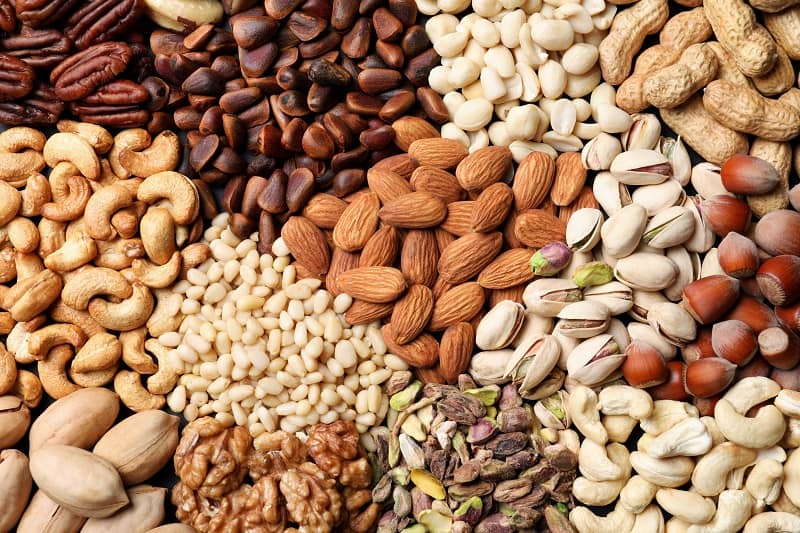Do You Have A Chocolate Allergy?
Overview
Chocolate is found in many popular desserts and even in some savory dishes. Though many people view chocolate as a sweet treat, there are some who have a sensitivity or allergy to chocolate or an ingredient in a chocolate-based food, maybe you have a chocolate allergy ?
Do you think you might have a problem with chocolate? Here’s how to tell whether cocoa or chocolate-based foods should be on your “no eat” list.
Symptoms
Chocolate allergies and chocolate intolerance aren’t the same things. If you are interested in learning about chocolate intolerance, be sure to check out our post on the subject!
We can divide the symptoms based on different components of chocolate itself : Cocoa, Milk, Caffeine and more.
Cocoa Allergy
One possibility is a reaction to cocoa. If the body is allergic to cocoa, the immune system will respond when it enters the body. This response can create symptoms such as:

- hives
- trouble breathing
- swollen tongue, lips, or throat
- a wheezing cough
- nausea or vomiting
- stomach cramps
These symptoms may be signs of anaphylaxis, which can be life-threatening if it is not treated immediately.
Milk Allergy
A person who is allergic to milk may experience some immediate symptoms in the first hours after eating milk products, such as hives, a wheezing cough, or nausea. However, some symptoms might be delayed and appear after hours or days. These symptoms can include:

- mucus secretions in the nose or lungs
- stomach upset
- skin rash or hives
- coughing
- abdominal cramps
- loose stool or diarrhea that may or may not contain blood or mucus
Some cases of extreme milk allergy can send a person into anaphylactic shock, which can cause the throat and mouth to swell and may lead to cardiorespiratory arrest. These cases require immediate medical attention
Symptoms of caffeine sensitivity
It is also possible that a person who has a reaction to chocolate is sensitive to caffeine.
The U.S. Department of Agriculture (USDA) estimates that a 100-gram bar of chocolate has around 43 milligrams of caffeine in it, which is about the same as half a cup of coffee. For people who are very sensitive to caffeine, this is enough to produce symptoms.
Symptoms of caffeine sensitivity (intolerance) include:

- jittery or nervous behavior
- anxiety
- digestive issues, such as diarrhea, nausea, or stomach pain
- increased heart rate
- trouble sleeping
- irritability
- dizziness
- headaches
Some people who are truly allergic to caffeine, which is rare, may also experience skin reactions, such as hives, rashes, or swelling. Individuals who are sensitive to caffeine will also notice these symptoms when drinking coffee, tea, energy drinks, or certain herbal beverages, such as guarana.
Causes
You’re more likely to have a reaction to chocolate if you’re allergic to it or its source, which is cocoa. But ingredients in chocolate-based foods, such as milk, wheat, and nuts, can also set off a reaction.
People with a gluten intolerance or celiac disease sometimes react to chocolate, especially milk chocolate. One theory is that this reaction is caused by cross-reactivity.
In people with celiac disease, the body reacts to gluten. Gluten is a protein found in wheat, rye, and barley. And chocolate contains a protein that’s similar in structure, so the immune system sometimes mistakes it for gluten.
The immune system produces antibodies in response to gluten. These antibodies trigger symptoms like:
- bloating
- abdominal pain
- diarrhea
- vomiting
Reactions to other ingredients
Some people who have an allergy to chocolate may be reacting to other ingredients in the chocolate. Other ingredients found in chocolate, such as tree nuts, peanuts, and soy, are common food allergy triggers.
Someone who is severely allergic to peanuts or tree nuts may have a reaction to plain chocolate made in the same facility as chocolate that contains these ingredients.
A person with a soy allergy typically has an allergy to the protein in the soy itself. Less commonly, the person may be reacting to the trace amount of soy protein in a soy-derived ingredient found in the chocolate, such as soy lecithin. A soy protein allergy can cause complex symptoms, such as:
- cold-like reactions, including a runny nose, watery eyes, nasal congestion, and sneezing
- digestive problems, including abdominal pain, stomach cramps, gas, and bloating
- symptoms of asthma caused by too much histamine in the lungs
- skin reactions, including itching, hives, or eczema
In some severe cases of soy protein allergy, people may experience more serious symptoms, such as:

- anxiety
- mental fog or confusion
- difficulty breathing
- dizziness or fainting
- difficulty swallowing
- redness of the skin
These symptoms may be the sign of an extreme reaction to soy and should be treated immediately.
It is also possible for people who are allergic to wheat to react to chocolate. This reaction may be due to contamination in the factory where the chocolate is made or from ingredients, such as wheat starch, which is in the chocolate itself.
Seeking help
If you suspect you might have an allergy or sensitivity to chocolate, see an allergist. Skin prick tests, blood tests, or elimination diets can pinpoint whether chocolate is causing your reaction. Depending on the severity of your response to chocolate, your doctor might tell you to avoid it. Or you may only need to limit chocolate in your diet.
If you have a severe allergy, carry an epinephrine auto-injector wherever you go. This device delivers a dose of the hormone epinephrine to stop the reaction. The shot should relieve symptoms like shortness of breath and swelling of the face.


